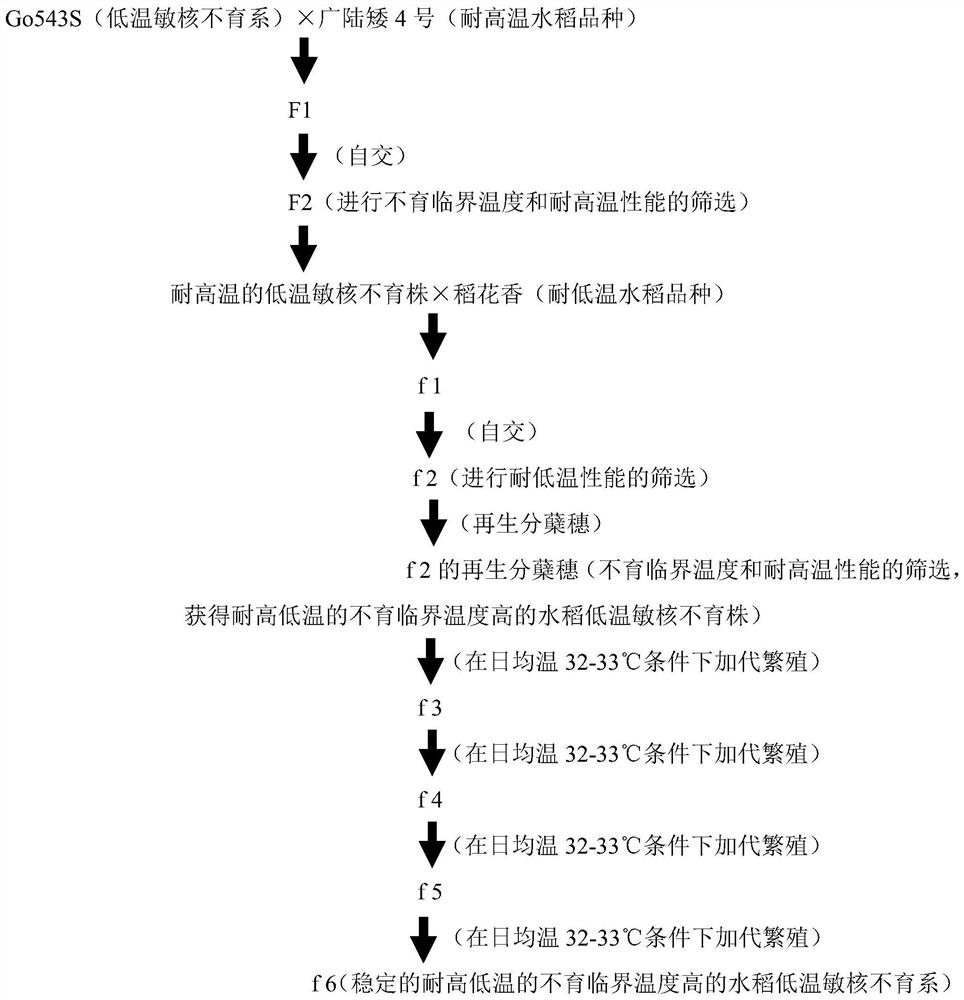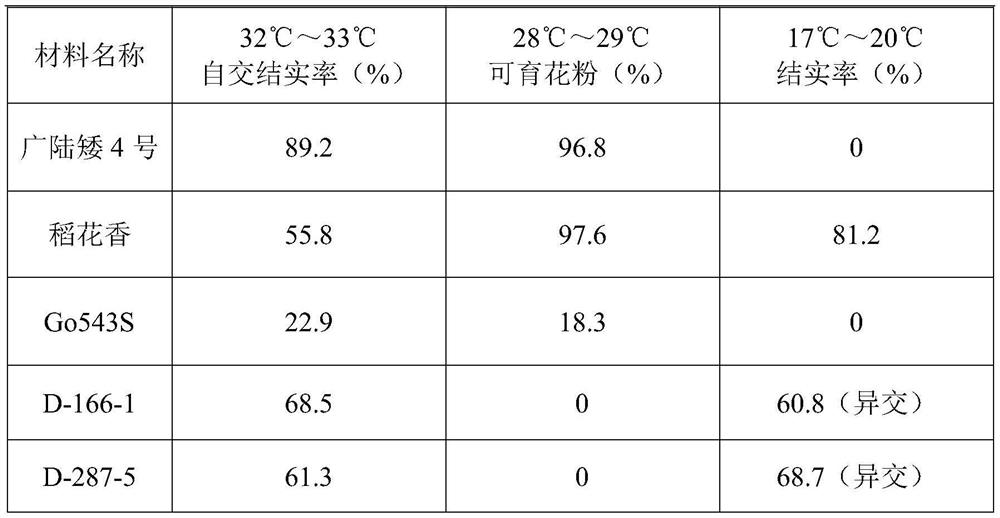Breeding method and application of a low-temperature-sensitive genic male sterile line of rice with high and low temperature-resistant sterility critical temperature
A critical temperature, high and low temperature resistant technology, applied in the breeding field of low temperature sensitive genic male sterile lines of rice, can solve the problems of low stigma vigor of the female parent, failure of hybrid seed production, low seed setting rate, etc., and achieve high quality hybrid seeds, The effect of improving seed production efficiency and high temperature resistance
- Summary
- Abstract
- Description
- Claims
- Application Information
AI Technical Summary
Problems solved by technology
Method used
Image
Examples
Embodiment 1
[0030] A method for breeding low-temperature-sensitive genic male sterile lines of rice with high and low temperature-resistant sterility critical temperature, such as figure 1 shown, including the following steps:
[0031] (1) Use rice Go543S (low temperature-sensitive genic male sterile line) to cross with Guangluai No. 4 (high temperature resistant rice variety) to obtain F1 generation hybrid seeds, plant F1 generation and harvest self-crossed seeds F2 generation, and then plant Screen the sterile plants with pollen fertility rate of 0 in the F2 generation population of ;
[0032] (2) In the pollen mother cell meiosis stage of the sterile strain obtained after the screening in step (1), the first temperature control is carried out under the condition that the average daily temperature is 28° C. to 29° C. (water temperature for submerging young ears). After 15 days of treatment, the sterile plants with fertile pollen were eliminated, and the sterile plants with a pollen fer...
Embodiment 2
[0041] The application of the low-temperature-sensitive genic male sterile line of rice with a high temperature-resistant sterility critical temperature selected in Example 1 in breeding sterile line seeds comprises the following steps: normally planting a high-low temperature-resistant sterile critical temperature The low-temperature-sensitive genic male sterile line of rice with high temperature is self-fertilized at the pollen development stage or flowering stage under the condition of daily average temperature of 32°C to 33°C, and then the high-low temperature resistant rice low-temperature-sensitive male sterile line with high critical temperature can be obtained. The self-fertilization seed setting rate of the nuclear male sterile line is over 60%, and the reproductive output of the sterile line seed is high.
Embodiment 3
[0043] The application of the low-temperature-sensitive genic male sterile line of rice with high temperature-resistant sterility and high critical temperature selected and obtained in Example 1 in hybrid seed production comprises the following steps: normally planting the high-low temperature-resistant sterile critical temperature high Low-temperature-sensitive genic male sterile lines of rice, during the pollen development stage or flowering stage, are crossed with other male parents for seed production at an average daily temperature of 20°C to 28°C to obtain hybrid seeds, and the risk of self-fertilization of the sterile line 0, the safety of hybrid seed production is high.
PUM
 Login to View More
Login to View More Abstract
Description
Claims
Application Information
 Login to View More
Login to View More - R&D
- Intellectual Property
- Life Sciences
- Materials
- Tech Scout
- Unparalleled Data Quality
- Higher Quality Content
- 60% Fewer Hallucinations
Browse by: Latest US Patents, China's latest patents, Technical Efficacy Thesaurus, Application Domain, Technology Topic, Popular Technical Reports.
© 2025 PatSnap. All rights reserved.Legal|Privacy policy|Modern Slavery Act Transparency Statement|Sitemap|About US| Contact US: help@patsnap.com


